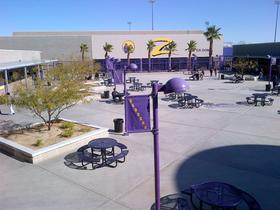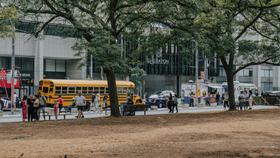In 2025, the age-old debate of private versus public schooling remains deeply relevant—but the landscape has evolved significantly. For parents, students, and educators, understanding the current dynamics can help make informed decisions about school choice. Here’s an updated look, drawing on the most recent data, policy changes, and expert insights.
Enrollment & Demographics
Today, public schools continue to educate the vast majority of U.S. K–12 students. According to data derived from the U.S. Department of Education, public schools enroll approximately 49.5 million students — about 90% of the total student population.
Private schools, by contrast, serve only a small fraction — just under 10%, or around 4.6 million students, per 2025 estimates.
Within the private sector, most schools remain relatively small: more than 44% of private schools enroll fewer than 300 students, while over 60% of public schools enroll more than 500 students, according to recent analysis. (Marketbrief)
Religious affiliation continues to define much of private education. According to the Pew Research Center, about 35% of private school students attend Catholic schools, while another 23% are in secular private schools. (Pew Research Center)
Tuition, Spending & Financial Realities
One of the starkest differences between public and private schools lies in their financing. Public schools are primarily funded via local, state, and federal tax revenue. By contrast, private schools rely heavily on tuition and donations.
The average private school tuition for 2025–26 is around $14,999 annually, according to PrivateSchoolReview.
For more granular breakdowns: elementary private schools average $14,018 per year, while private high schools average $17,954.
Tuition varies greatly by state. For instance, Connecticut’s average sits at $28,253 — among the highest in the country — while states like South Dakota have averages closer to $6,367.
Public schools, although “free” for in-district students, are not inexpensive to run. Per-pupil public spending in 2025 averages roughly $14,300, depending on the district.
For parents considering private options, financial aid often plays a critical role. Many private schools offer need-based assistance, and school choice programs — such as vouchers, tax-credit scholarships, and education savings accounts (ESAs) — are growing in reach.
Policy & School Choice Trends
A defining trend of 2025 is the surge in private school choice participation. EdChoice reports that total enrollment in private school choice programs increased by 25%, from just over 1 million in 2024 to approximately 1.3 million in 2025. (EdChoice)
These programs — which include vouchers, ESAs, and tax-credit scholarships — exist in more than 30 states. (Public School Review) For instance:
States like Alabama have introduced new ESAs under the CHOOSE Act, allowing eligible families to receive up to $7,000 per student for private school tuition beginning in 2025–26. (AP News)
At the federal level, proposals for a tax-credit scholarship program have gained traction. As reported by The Washington Post, some plans would allow taxpayers to redirect billions in federal tax dollars to voucher programs. (The Washington Post)
These shifts signal increasing political momentum behind school choice — but they also raise critical questions:
Will expanded voucher programs divert funds from traditional public schools?
How equitable is access to private options when many voucher users are not low-income? (Some state analyses suggest that in existing programs, a large share of participating families are not from low-income brackets.)
Will rising demand push private school tuition higher, making net cost less accessible even with aid?
Outcomes & Educational Quality
Many families choose private schools for perceived advantages: smaller class sizes, more tailored instruction, and a potentially stronger academic culture. Indeed, private schools generally offer lower student-teacher ratios and more intimate learning contexts. (Wooclap)
But the relationship between school type and academic outcomes is complex:
After controlling for socio-economic factors (such as income and parental education), some studies suggest that public schools can outperform private schools on specific metrics, challenging the assumption that private always means better.
Efficiency and resource utilization also vary. Research on school operations (particularly in OECD countries) shows that private schools often have more autonomy, but public systems remain vital in addressing equity and scale.
In the U.S., smaller private schools may offer a more supportive environment, but that can come at a trade-off: less diversity, depending on the school’s admission policies and tuition structure.
Real-World Example: Texas
Texas illustrates many of these 2025 trends. A recent survey of private schools in Texas revealed:
There were around 70,575 open seats across surveyed private schools, suggesting capacity to absorb more students under expanded school choice policies.
The median tuition reported for 2024–25 was $9,400, far lower than the national average — highlighting intra-state variation. (Texas Private Schools Association)
On financial aid: 97% of private schools surveyed provided tuition assistance, supporting an average of 38% of their student body.
Regarding special needs: 75% of the private schools surveyed serve children with special needs, with about 19% of students in those schools having identified needs.
This data suggests that in some states, private schools are not just for affluent families — they are positioned to accommodate a wider range of students.
Key Take-Aways for Parents and Educators
Cost remains a major factor. While private school tuition is rising, many families rely on financial aid or school-choice programs to bridge the gap.
Policy momentum is shifting. With more states supporting ESAs, vouchers, and tax-credit scholarships, access to private options is expanding — but not without concerns about equity and public funding.
Smaller doesn’t always mean better. Intimacy and individualized attention in private schools are appealing, but outcomes vary, and public schools have strengths in scale, diversity, and resources.
Due diligence matters. For families considering private school, examine not just sticker price, but net cost, financial aid availability, student-teacher ratios, diversity, and how the school aligns with your child’s needs.
Public-school innovation is ongoing. Many districts are reevaluating attendance zones, investing in integration, or reallocating resources to support underserved students — meaning “making public school work” is still a core challenge and opportunity. (For instance, recent academic research points to new frameworks for redistricting to promote equity.
Conclusion
The private vs. public school debate in 2025 is not just about legacy differences — it reflects a rapidly shifting educational environment shaped by policy, equity, and choice. For many parents, the decision will hinge on individual priorities: academic quality, community, cost, and access. As private school enrollment grows through school choice programs, and public systems continue to evolve, the right choice will increasingly look different from one family to another — but one thing remains constant: staying informed is key.












